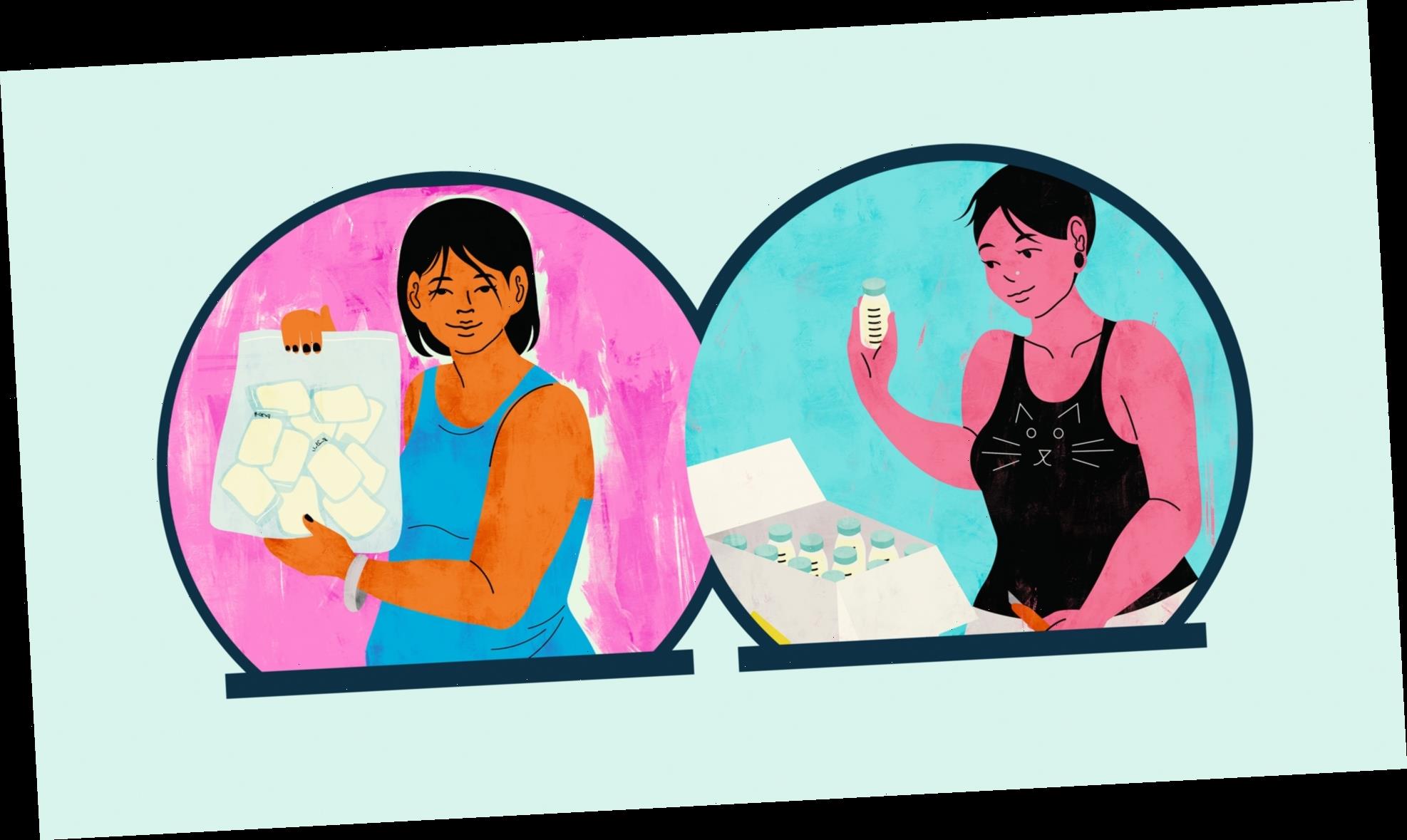My third daughter was born with a pre-existing medical condition that precluded our establishing a conventional breastfeeding relationship. Honestly, I was devastated. After successfully breastfeeding my two older daughters, each for 18 months, I was determined to make breastfeeding an option for my youngest child as well — no matter how deep in the distant future that might be. Cora was hospitalized for the first two weeks of her life, after having undergone open-heart surgery when she was just two days old. The myriad of scrub-clad doctors and nurses hovering over her around the clock caused me to question my entire role in Cora’s care. What was my job as mom to a newborn patient?
In the end, I survived what could have been a disastrous newborn period with a wildly important job: I became a breast milk donor.
The moment my milk came in, I knew I wouldn’t let my liquid gold go to waste. “Breast milk has well-recognized nutritional benefits for infants,” pediatrician Dr. Claudia M. Gold told SheKnows. “It contains antibodies and other substances that help babies fight infections. For mothers, breastfeeding releases the hormone oxytocin, which produces feelings of contentment and helps the uterus return to pre-pregnancy size,” she explained. Understanding this mutually beneficial relationship was key in my decision to share the proverbial wealth. Before Cora’s first surgery, the hospital’s lactation consultant helped me to hand-express colostrum from each of my swollen breasts which — when swabbed directly into the baby’s mouth — was key in colonizing her gut with good bacteria prior to surgery. And then I made fast friends with a hospital-grade breast pump.
“The mothers who do tend to donate are overproducers,” Kim Barbas, the Director of Lactation Support at Boston Children’s Hospital, told SheKnows. “They have all of this milk, from hours and hours of pumping for their baby, and they don’t want to see it discarded,” she explained of a driving factor in mother’s choosing to become breast milk donors. And then there are practical reasons — chief among them lack of freezer space — that make becoming a donor a logical choice. In my case, I fully intended to put my ounces upon ounces of pumped milk to use feeding my own infant. It was, at the time, the easiest (and most practical) way for me to be an active participant in Cora’s “team;” 8-10 times a day, while Cora remained in the hospital, I pumped at her bedside. Of all the jobs that needed to be done, this was the single one only I could do. And so I pumped, for what felt like hours upon end, dreaming of nourishing my child once she was on the road to recovery.
Today, donor milk is a standard of care at many hospitals — including Boston Children’s Hospital — even in the cardiac unit (where my daughter was a patient as a newborn). “We can keep babies exclusively human-milk fed until mom’s milk is available,” Barbas explains of the rise in donor milk use among at-risk populations. The practice, called “bridging,” allows everyone space to get acclimated to their respective “new normal”; by the time the baby is ready to eat again, post-op, mom’s milk is ready and she likely has a good supply. Again, the benefits are two-fold: “First, we’re realizing that these kids eat better post-op if they suckled on something pre-op,” Barbas explains. “And if that [child’s] mom turns around and has extra milk, she will often donate to continue that cycle,” said Barbas of a practice that benefits all who participate.
Once we got home from the hospital, my freezer drawer filled at an alarming rate — and then Cora was diagnosed with a cow’s milk protein intolerance rendering hundreds of ounces of frozen breastmilk useless to her (as my diet was full of dairy). A quick Google search revealed that the Mothers’ Milk Bank Northeast, in Newton Upper Falls (just two hours from my home in western Massachusetts) was not yet accepting donor milk. The Mothers’ Milk Bank Austin (yes, Texas!) was accepting donor milk, and the staff there helped me navigate the three-step application process: I filled out a series of informational forms; I completed a ten-minute phone screening; and I complied with a simple blood test (for which the organization paid).
Within three weeks, I was approved as a donor. In a matter of about a month, I sent 234 ounces of breastmilk to Austin via FedEx (and dry ice). In the same amount of time, I eliminated all traces of cow’s milk from my diet leaving me with a ready milk supply to feed my growing baby. Looking back, it was a win-win situation: becoming a donor allowed me to remain an integral part of my own child’s care; pay it forward to another mother/child in need; and maintain a healthy milk supply to make breastfeeding an option for me and Cora going forward. Not to mention the modicum of control it offered me during a time when my life felt like it was spiraling out of control.
“You are the only one who can make milk that is ideally suited to your baby,” Barbas reminds the mothers she meets, for many of whom pumping is their life-line to that baby. For me, becoming a breastmilk donor was a way of normalizing my maternal experience and paying it forward. It’s what Barbas calls a new mother’s “superpower” which, looking back, I’m so thankful to have shared.
Want more honest breastfeeding stories? Celebrity moms get real about breastfeeding, pumping and more, here.
Source: Read Full Article






